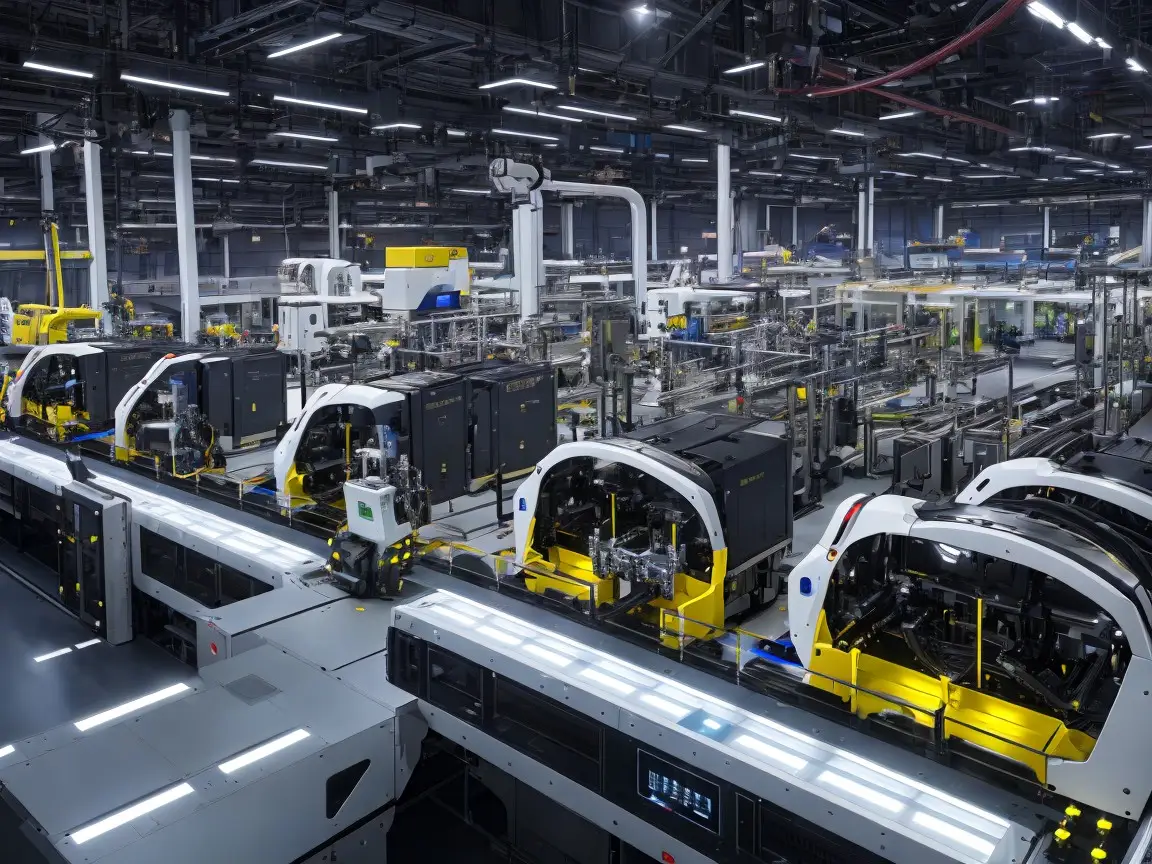In the fast-paced world of manufacturing, efficiency and precision are key to maintaining competitiveness. Robotics Process Automation (RPA) is one of the most promising technologies transforming the industry by automating repetitive, time-consuming tasks. This tutorial will guide you through the process of implementing RPA in a manufacturing environment to streamline operations, improve accuracy, and reduce costs.
1. Understanding Robotics Process Automation (RPA) 🤖
Robotics Process Automation (RPA) refers to the use of software robots (bots) to automate rule-based tasks across digital systems. In manufacturing, this can involve automating processes like inventory management, order processing, scheduling, and reporting.
Unlike traditional automation systems, which require specialized hardware and software, RPA utilizes “bots” that operate over existing systems, making it highly scalable and flexible.
Why Use RPA in Manufacturing?
- Improved efficiency: RPA can handle repetitive tasks faster than human workers, freeing up time for more critical activities.
- Reduced human error: Bots perform tasks with high accuracy, minimizing mistakes caused by fatigue or oversight.
- Cost savings: Automating tasks can significantly reduce labor costs in areas such as data entry, tracking, and reporting.
2. Key Benefits of RPA in Manufacturing 🏭
Before diving into the implementation process, let’s highlight some key benefits of integrating RPA in manufacturing:
Enhanced Productivity
- Automated Scheduling: Bots can handle shift schedules, track production cycles, and manage maintenance logs without any manual intervention.
- Faster Processing Times: Automated tasks are completed faster than manual work, speeding up the entire production line.
Improved Accuracy and Consistency
- Precision in Reporting: RPA ensures accurate, consistent reporting in areas like production metrics, inventory levels, and safety compliance.
Real-Time Data Insights
- Data Analytics: RPA can gather real-time data on production processes, providing insights that help improve decision-making.
Scalability
- Adaptable: RPA can be scaled as the company grows, handling more tasks or larger volumes without requiring significant investment in new infrastructure.
3. Step-by-Step Guide to Implementing RPA in Manufacturing
Step 1: Identify Repetitive Tasks for Automation 🔄
The first step is to analyze existing manufacturing processes and identify which tasks are repetitive and can be automated. These may include:
- Inventory management
- Order processing
- Quality control documentation
- Data entry and report generation
- Supply chain tracking
Tasks that are rule-based, follow a predictable process, and involve interacting with digital systems are ideal for RPA.
Step 2: Choose the Right RPA Tools & Platform 💻
Selecting the right RPA platform is crucial for successful implementation. Some popular platforms for manufacturing automation include:
- UiPath
- Automation Anywhere
- Blue Prism
These platforms offer drag-and-drop interfaces, machine learning capabilities, and easy integration with existing software systems.
Step 3: Develop and Configure Bots 🤖
Once the platform is selected, you’ll need to develop and configure the bots to handle the tasks you’ve identified in Step 1. Here’s how:
- Workflow Design: Map out the workflows that the bot will automate, including task inputs, decisions, and outputs.
- Bot Development: Using the selected platform, create bots that will execute tasks such as checking inventory, verifying orders, or running quality control checks.
- Testing: Test the bots in a controlled environment to ensure they function as expected, handling any edge cases or exceptions in the workflow.
Step 4: Integration with Existing Systems 🔗
Integrating RPA into your manufacturing environment means ensuring it works seamlessly with your existing software systems, such as:
- Enterprise Resource Planning (ERP) systems
- Manufacturing Execution Systems (MES)
- Supply Chain Management (SCM) tools
RPA tools typically support integration through APIs and connectors, enabling bots to work within the established digital ecosystem without requiring major overhauls.
Step 5: Monitor and Optimize Performance 📊
Once the RPA bots are deployed, continuous monitoring is essential to ensure optimal performance. Key performance indicators (KPIs) should be tracked, such as:
- Task completion times
- Error rates
- System downtimes
Periodically review the RPA system’s performance, and make adjustments as needed to improve efficiency and handle any evolving requirements.
Step 6: Scale RPA Across Other Manufacturing Areas 📈
After successfully automating one or more tasks, consider expanding RPA to other areas of the manufacturing process. This could involve:
- Automating production scheduling
- Streamlining maintenance management
- Optimizing supply chain and procurement processes
Scaling RPA allows you to realize even greater efficiency across the entire operation.
4. Challenges of RPA in Manufacturing 🚧
While RPA offers significant benefits, there are challenges to be aware of:
- Change Management: Introducing RPA requires a cultural shift. Employees may feel threatened by automation, so it’s important to communicate the benefits and offer retraining for new roles.
- Data Security: Handling sensitive manufacturing data requires robust security protocols to ensure compliance with privacy regulations.
- Software Compatibility: Not all legacy systems are compatible with RPA. Ensure the existing infrastructure can support RPA tools, or plan for necessary upgrades.
5. Real-World Applications of RPA in Manufacturing 🏭
RPA is already being successfully implemented in various areas of manufacturing:
Inventory Management 📦
- Example: An automotive manufacturer uses RPA to track inventory levels across multiple warehouses. Bots automatically reorder parts when stock runs low, reducing downtime.
Order Processing and Billing 💳
- Example: A consumer electronics company automates the order-to-billing process, reducing errors in invoicing and accelerating the delivery process.
Quality Control Reporting ✅
- Example: A food processing plant uses RPA to automate the generation of quality control reports, ensuring timely submission to regulatory bodies.
Conclusion
Integrating Robotics Process Automation (RPA) into manufacturing processes is a game-changer. By automating repetitive tasks, manufacturers can improve efficiency, reduce costs, and enhance accuracy. With the right tools, clear strategy, and continuous optimization, RPA can revolutionize your manufacturing operations, enabling smarter, more scalable production systems.
Internal Links:
External Links:
- Explore more on RPA from Automation Anywhere.
- Discover RPA Case Studies on UiPath.


But wanna comment on few general things, The website pattern is perfect, the content material is rattling excellent : D.